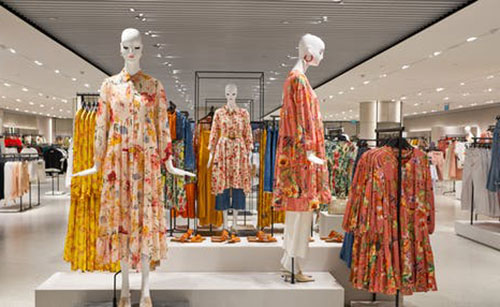"The growing hazards of fast fashion are forcing many brands to incorporate sustainability initiatives in their operations. A recent example of this is Zara, which introduced a sustainability pledge. However, the brand produces around 450 million garments a year besides releasing 500 new designs every week, about 20,000 a year. This makes its adherence to sustainability difficult."
 The growing hazards of fast fashion are forcing many brands to incorporate sustainability initiatives in their operations. A recent example of this is Zara, which introduced a sustainability pledge. However, the brand produces around 450 million garments a year besides releasing 500 new designs every week, about 20,000 a year. This makes its adherence to sustainability difficult.
The growing hazards of fast fashion are forcing many brands to incorporate sustainability initiatives in their operations. A recent example of this is Zara, which introduced a sustainability pledge. However, the brand produces around 450 million garments a year besides releasing 500 new designs every week, about 20,000 a year. This makes its adherence to sustainability difficult.
The model of fast-fashion business is antithesis to sustainability. Even though many fast fashion companies uphold recycling of garments, they do not have required capabilities to recycle their garments at the scale needed at the current production rates. Many fast fashion companies advocate the use of sustainable fabrics. However, these fabrics require a tremendous amount of energy and natural resources to produce which prevents them from being 100 per cent sustainable.
Need-based production to boost sustainability
Small brands try to be sustainable by producing lesser clothes. They use strategies like producing made-to-order, to curtail waste. Clothe designs are of high quality to ensure longevity. Small brands also follow the ‘anti-fashion calendar’ by producing only when required as against large companies that produce clothes in bulk. So, if large corporate retailers aim to adopt sustainability they need to rework their entire business culture.
to curtail waste. Clothe designs are of high quality to ensure longevity. Small brands also follow the ‘anti-fashion calendar’ by producing only when required as against large companies that produce clothes in bulk. So, if large corporate retailers aim to adopt sustainability they need to rework their entire business culture.
Even though corporate brands and retailers provide statistics about their environmental impact reductions within their supply chains, these reports are voluntary and not verified externally. Their method for measuring improvements is also not consistent or standardised.
A brand can’t claim to be sustainable just by using sustainable materials. It still has to deal with issues like cheap costs and speedy production which can lead to labor exploitation. It can’t urge consumers to consume responsibly as this would ultimately affect its bottomline. It can therefore, provide repair or tailoring services which will encourage consumers to use their clothes for a longer period.
To achieve the United Nations Sustainable Development Goals, including the 2C global temperature target, the fashion industry must change their outlook towards sourcing, manufacturing and distributing clothes.












